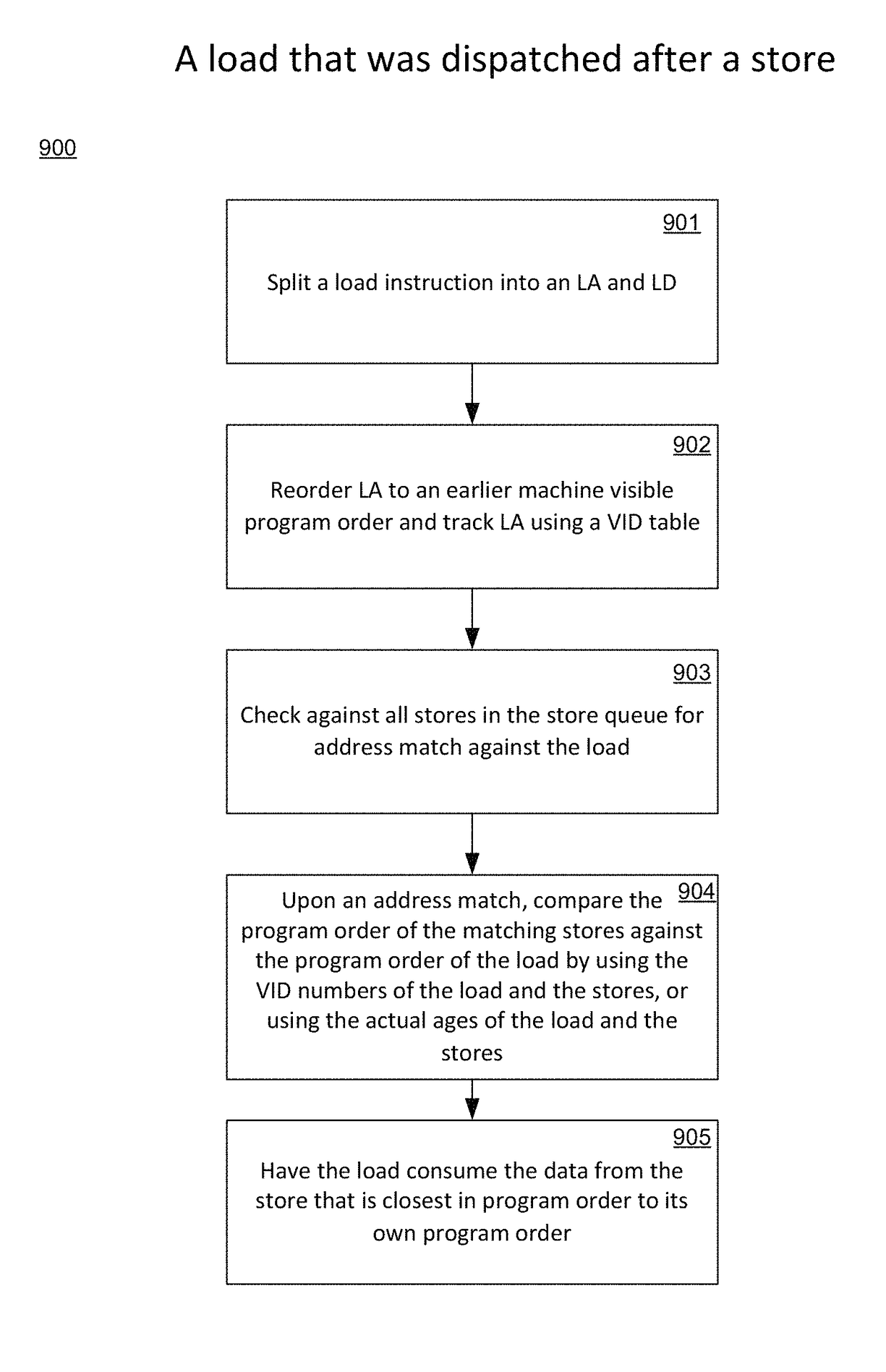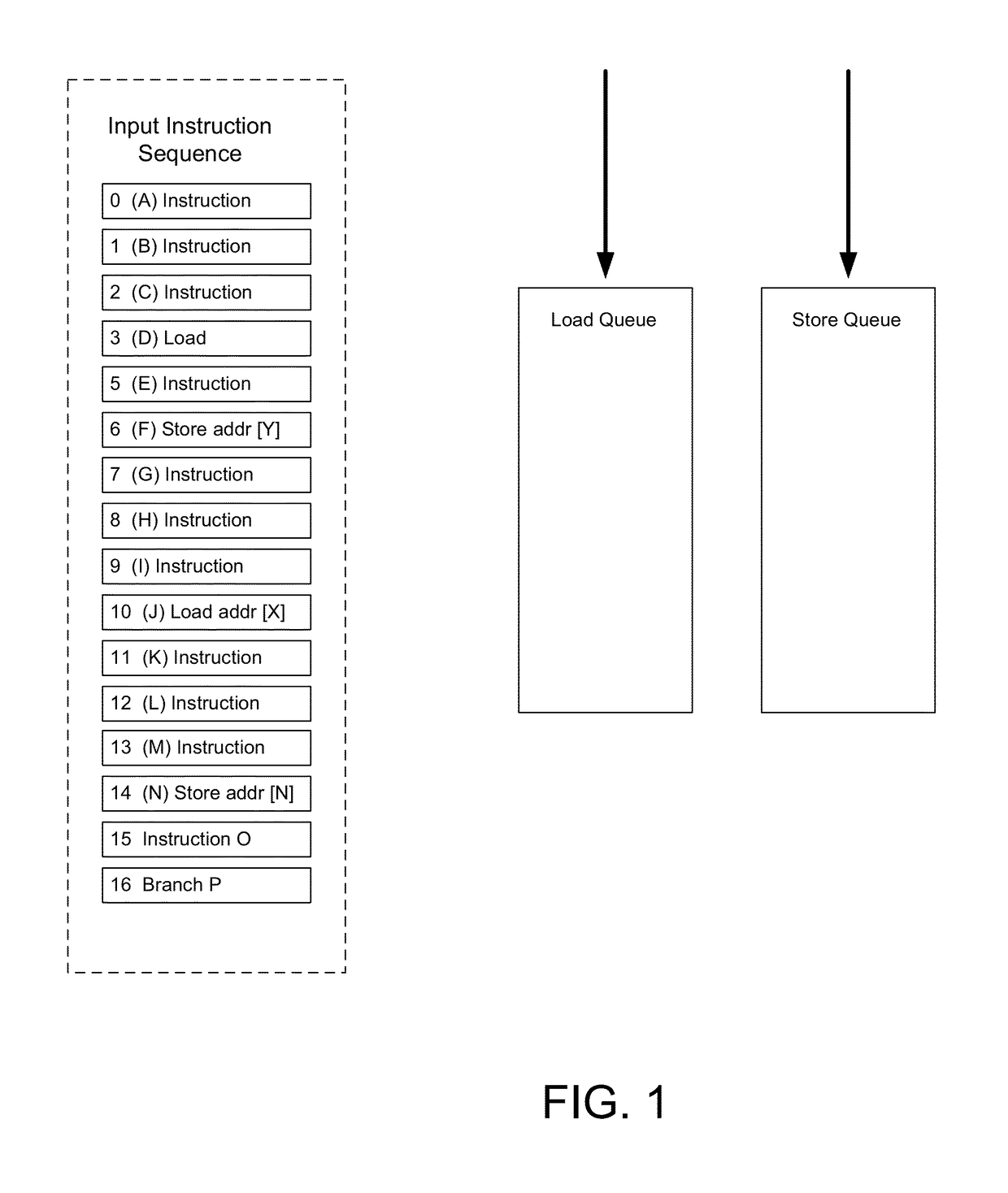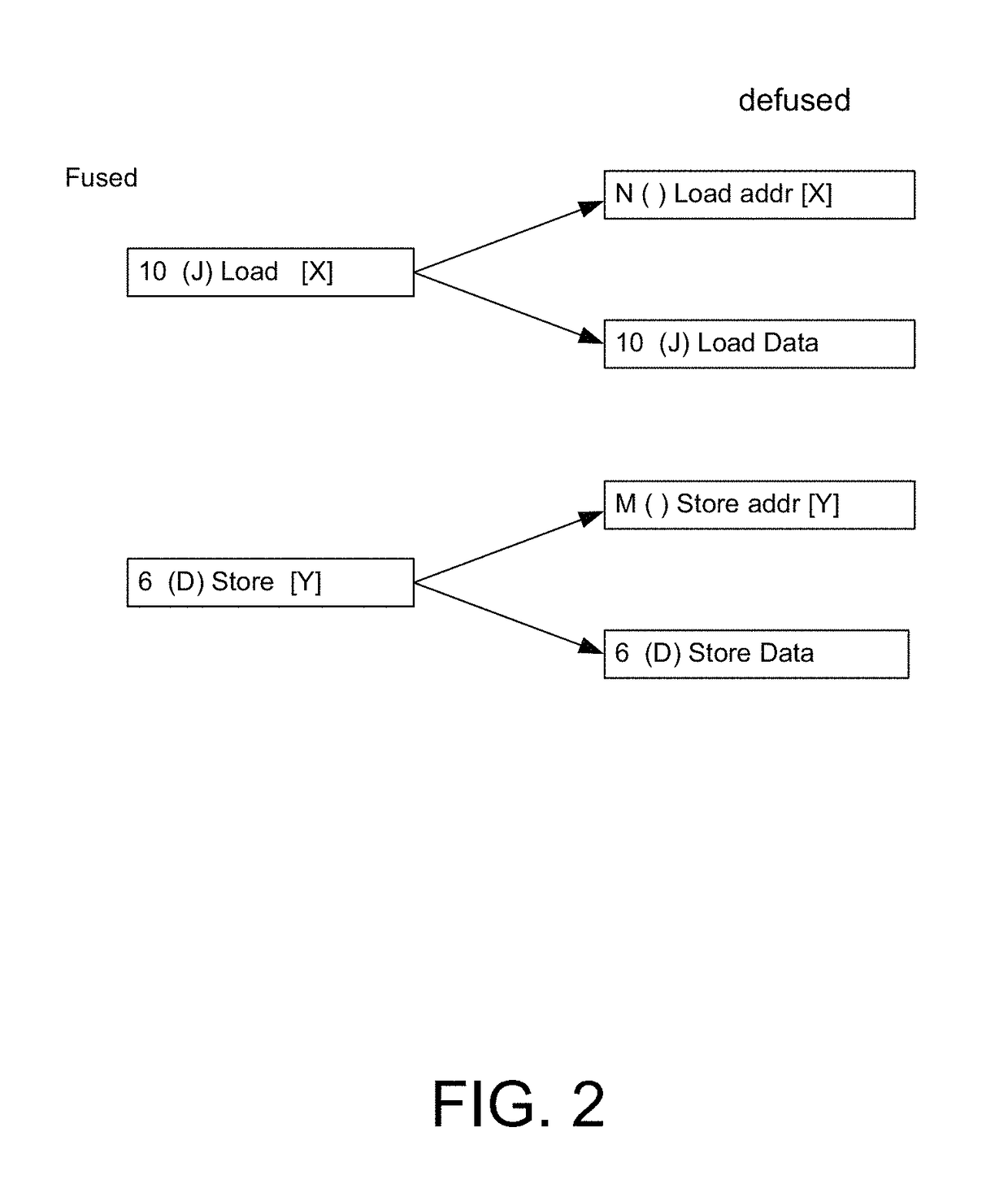Method and system for implementing recovery from speculative forwarding miss-predictions/errors resulting from load store reordering and optimization
a technology of load store and recovery method, applied in the field of digital computer systems, can solve the problems reducing the area, power and complexity of duplicating all architecture state elements, so as to reduce and the effect of reducing the number of context switches
- Summary
- Abstract
- Description
- Claims
- Application Information
AI Technical Summary
Benefits of technology
Problems solved by technology
Method used
Image
Examples
example usage
[0079]
A. Saving Register Resource after Promoting a Load Far in Advance of a Use of the Data.
Assume the original code is.
[0080]LDR R1,M[ea1]
[0081]ADD32 Rt,R1,R2
To hide memory access latency we wish to promote in execution flow the LDR as early as possible above the usage of the R1 data (the ADD).
[0082]LDR R1,M[ea1]
[0083]many instructions
[0084]ADD32 Rt,R1,R2
[0085]One downside of doing this is it keeps the R1 register ‘busy’ waiting for data, and it can not be used for other purposes. The memory queue expands the pool of resources to hold data. So we covert the in LDR into a LAD and a subsequent LAD:
LAD QID,M[ea1]
. . . many instructions
LAF M[ea1]
ADD32 Rt,QID,R2
Since a load-queue entry QID is used R1, is freed to be used for other purposes.
Or load Rt with the difference of Rt-QID, or if QID not present then reload data from M[ea1] subtract R2 from it, and place result in Rt.
[0086]It should be noted that with the above described implementation it is not necessary for the memory address ...
PUM
 Login to View More
Login to View More Abstract
Description
Claims
Application Information
 Login to View More
Login to View More - R&D Engineer
- R&D Manager
- IP Professional
- Industry Leading Data Capabilities
- Powerful AI technology
- Patent DNA Extraction
Browse by: Latest US Patents, China's latest patents, Technical Efficacy Thesaurus, Application Domain, Technology Topic, Popular Technical Reports.
© 2024 PatSnap. All rights reserved.Legal|Privacy policy|Modern Slavery Act Transparency Statement|Sitemap|About US| Contact US: help@patsnap.com










